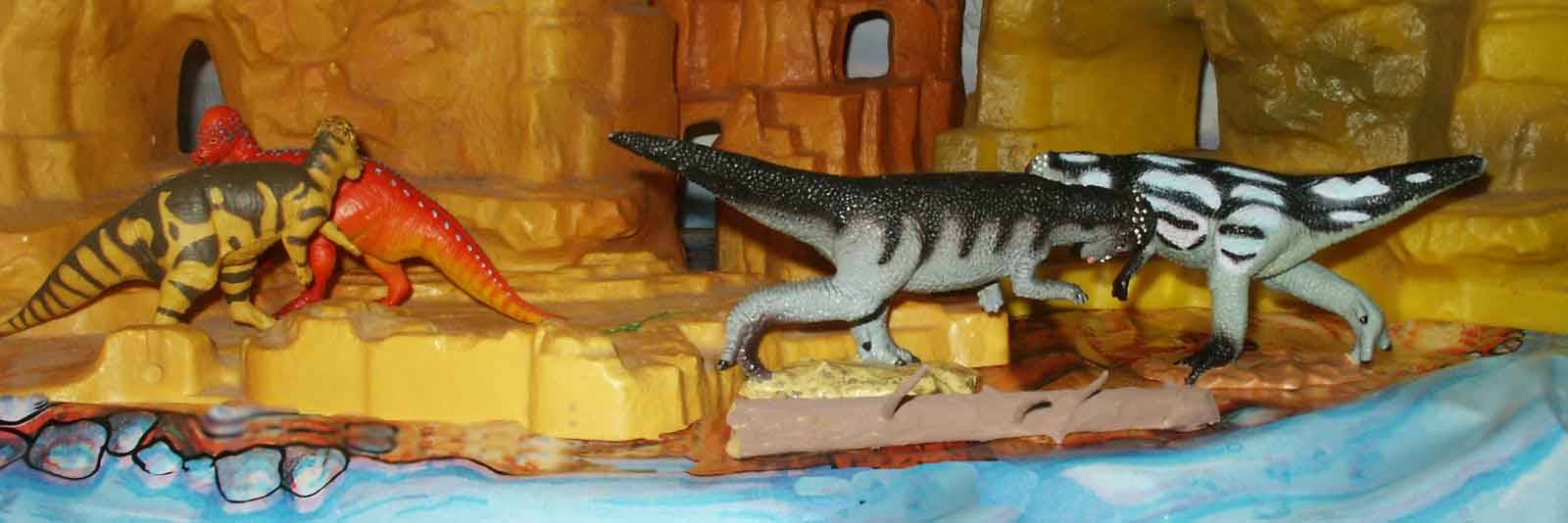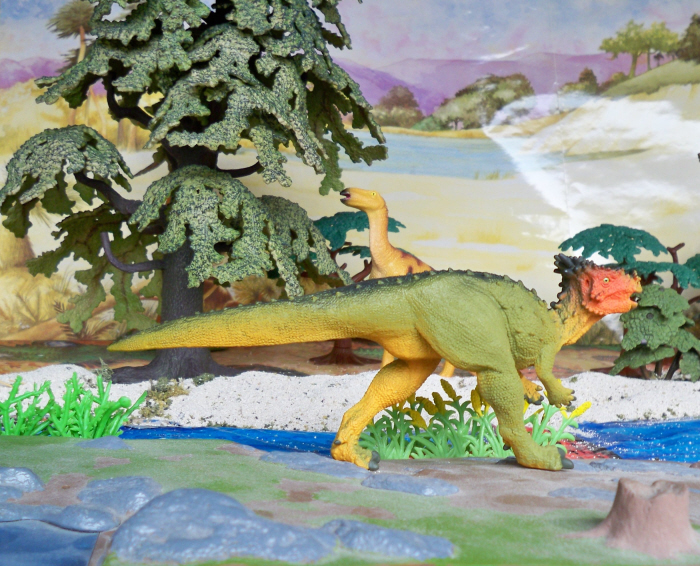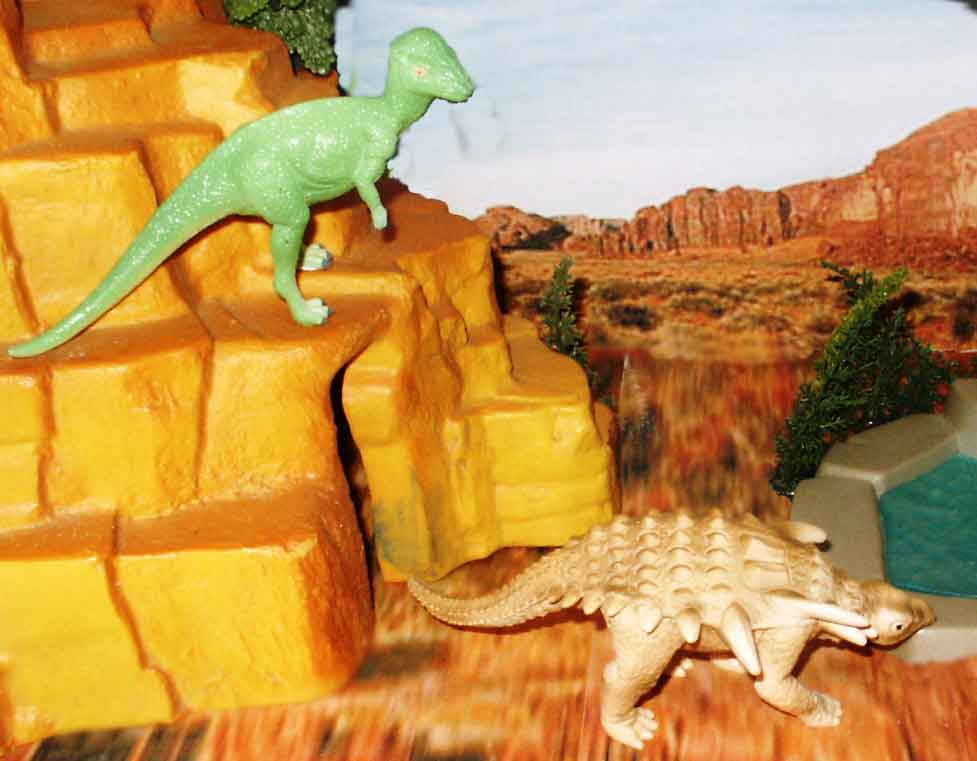LATE
CRETACEOUS
HELL CREEK FORMATION.
The Hell Creek pachycephalosaurs were bipedal, herbivorous/omnivorous animals with domed, flat or wedge-shaped skulls. Hell Creek has remains of Pachycephalosaurus, Dracorex, Stygimoloch and Sphaerotholus. The pachycephalosaurs Dracorex, 10 feet, and Stygimoloch, 10 feet, may be specimens of Pachycephalosaurus, 15 feet, in which the dome and horns are not well-developed, either because the animal was a juvenile or a female.
mouse over diorama pics for figure information.
Pachycephalosaurus was the largest "bonehead", with the thickest, spikiest skull. The bone of the braincase was 10 in thick, and left little room for brain. Bony spikes jutted from its low,narrow snout, and it had sharp knobs on the back of its head.

It was proposed Pachycephalosaurus and its relatives would ram each other headlong. It is more probable that the pachycephalosaurid genera engaged in flank-butting in intraspecific combat.

Dracorex had no dome. It most resembles Stygimoloch, with 4 shorter head spikes rather than the 3 longer ones associated with Stygimoloch skulls. It has a combination of derived and primitive characters,ans some consider this an early growth stage of Pachycephalosaurus.

Stygimoloch had prominent horns on its head, used mainly for show. It lived in woodlands and was named after the River Styx of Greek mythology, as a play on words from its occurrence in the Hell Creek Formation. It may be a growth stage of Pachycephalosaurus.

Sphaerotholus survived from the Campanian of New Mexico to the end of the Maastrichtian of Montana a relatively long duration and a widespread distribution.
Previous Torosaurus next armored dinosaurs



